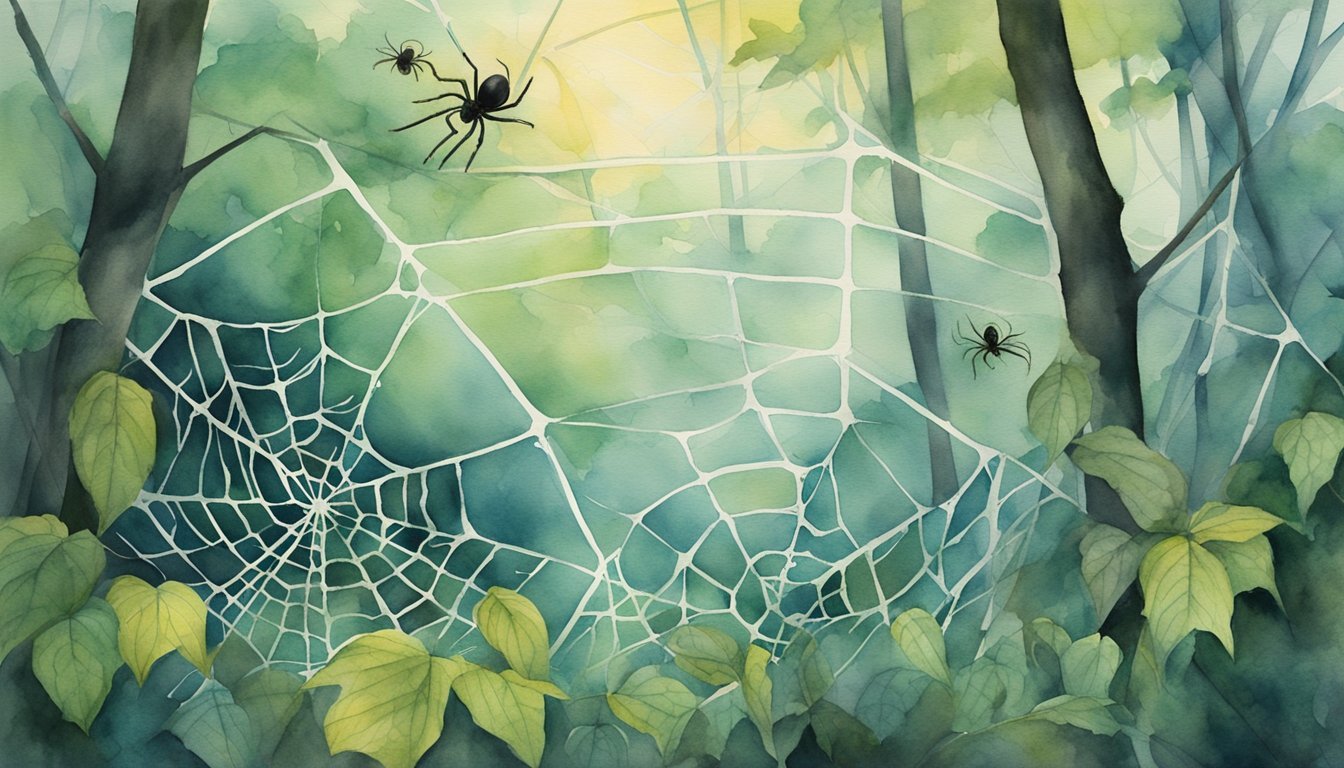Understanding Spiders
Spiders are an incredibly diverse group of arachnids with unique biological features and behaviors. This section delves into their anatomy, the wide variety of species, their remarkable silk and web-making abilities, and their varied habitats and behaviors.
Anatomy and Biology
Spiders possess two main body segments: the cephalothorax (or prosoma) and the abdomen (or opisthosoma). The cephalothorax combines the head and thorax, where you’ll find the spider’s eyes, fangs, and pedipalps. Typically, spiders have eight eyes, but some species may have six or fewer. These eyes are made of numerous lenses that are excellent at detecting movements and vibrations. Unlike humans, spiders lack muscles to move their limbs. Instead, they rely on hydraulic pressure to control their jointed limbs. The abdomen houses the spinnerets, which are tissues specialized for spinning silk, a protein that is key in web construction.
Diversity and Species
There are more than 45,000 species of spiders known to science, and they come in a vast array of colors and sizes, adapted to virtually every kind of land habitat. From the ground-dwelling tarantulas to the architecturally inclined orb-weavers, the variety is staggering. Identification of spiders often involves observing the types of webs they construct, body shape, coloration, and behavior.
Silk and Webs
Spider silk is one of nature’s most fascinating materials, known for its incredible strength and elasticity. Spiders use their silk not just for creating intricate webs to capture prey, but also for protection, reproduction, and mobility purposes. The silk is expelled through the spinnerets and can be manipulated into different textures and strengths depending on its intended use. The silk’s composition includes complex proteins that are still being studied by scientists.
Habitats and Behavior
Spiders are found in every continent except Antarctica, thriving in diverse environments from urban areas to the most secluded corners of the world. A spider’s behavior is as complex as its habitat is varied. For example, some spiders use their silk to construct elaborate traps for catching prey, while others are active hunters that rely on speed and agility to capture their next meal. Spiders are also known to exhibit unique behaviors such as mating dances and the creation of decoys to fool predators.
Understanding spiders gives an appreciation for their role as predators, their contribution to ecosystems, and their potential applications in science and technology. They are remarkable arachnids that continue to captivate and surprise with their intricate behaviors and biological specialties.
Spider Ecology and Interaction with Humans

Spiders, an integral part of the planet’s ecosystem, play a significant role in controlling insect populations and exhibit fascinating interactions with humans.
Feeding and Hunting Strategies
Spiders demonstrate a variety of hunting strategies. For instance, orb-weaving spiders create intricate spider webs to capture their prey, which mainly consists of insects. Meanwhile, hunting spiders like the goliath birdeater or the wolf spider pursue their prey and overpower them with speed and agility. Spider predation is guided by sensitive hairs on their legs that detect vibrations, assisting them in locating and identifying potential prey.
Reproduction and Life Cycle
Reproduction in spiders involves complex behaviors, where male spiders often engage in elaborate dances to avoid being eaten by females. After mating, many species, such as the black widow spider, produce egg sacs to protect their offspring. The life cycle from embryo to maturity can vary greatly, with some spiders like the tarantulas living up to 20 years.
Venom and Defense Mechanisms
Spider venom, used primarily for subduing prey, can vary in potency. While most spiders possess venom, species like the black widow and brown recluse are harmful to humans due to their potent venom. Defense mechanisms include the release of silk, mimicry, and retreat to their nests or burrows when sensing a threat.
Spiders and Human Society
The relationship between spiders and humans is complex. Spiders play a vital role in controlling pests, and their venom is studied for potential medical applications. However, spiders like the brown recluse or the funnel-web spiders can be a threat to humans. Cultural attitudes toward spiders range from reverence in some societies to fear and disgust in others, occasionally leading to arachnophobia.

